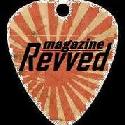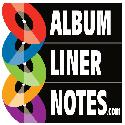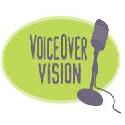
(click on picture to open file)
By: Michael D. Vogel
– With Contributions from Greg Sorrels
© March 13, 1998. Michael D. Vogel. All Rights Reserved.
Published in:
Aggro-Active magazine – March 27, 1998
Bon Scott sang the immortal words, “Let there be sound, light, drums, guitars…let there be rock!” As simple as these words might be, I don’t think they were penned with the Internet in mind.
In the beginning, back in 1986, a small Rock station in Long Beach, California, signed on the air, in an effort to satisfy the city’s insatiable hard rock appetite. Then it came to pass in 1995 that that little ol’ rock & roll show packed up its “Pure Rock” format and bid a fond farewell to the airwaves, leaving a hard rockin’ legacy that went far beyond its 3,000 watt reach.
But that was not the end of KNAC–for absence really only creates that much more of a desire. So, three years to the day of their sign-off, February 15, 1998, KNAC was reborn. Only this time they have gone global, broadcasting on a whole new medium–the Internet. In a follow-up conversation to an earlier interview (Album Network #980, 2/13/98), I had the pleasure of speaking with the head “Pure Rocker,” KNAC vet Long Paul, about what has transpired since signing on the ‘Net with original programming, as well as his vision of the relatively uncharted waters of Internet broadcasting.
One thing is for sure: KNAC is back, and this time they aren’t stopping for anything short of complete world domination!
Why don’t you give us a little background on how KNAC’s “Pure Rock” format originally got started, and how it came to be such a well-known entity.
Long Paul: “KNAC came to be because Iron Maiden was doing four shows at the Long Beach Arena on the Powerslave tour; KLOS’s call letters were on the tickets, but nobody was playing them in town. There they were, selling 50,000 tickets over a four-day span, and they weren’t on the radio! At that point, our President/GM, Gary Price, just kind of scratched his head and said, ‘You know, maybe we have something here.’ It was soon after that, in January of 1986, that KNAC changed formats.”
What was the impetus for KNAC on the Internet?
LP: “It all started with Rob Jones, Jr. He’s working at Demonet, a software demo company that does huge World Wide Web projects. Rob’s been around the business and in band management, and has been a big fan and supporter of the station. One day, he just decided to create a Web site, and thought, ‘Gee, I could put old KNAC programming on there! Wouldn’t that be neat?’ Then, he called Mike Stark, and Mike called me, and we put our heads together and said, ‘You know what we could do with this?’ The idea was literally born and snowballing within two weeks.”
Since KNAC originally came into being as a result of a void in the Los Angeles market for an Active/Aggro Rock station, is the new incarnation of KNAC also a result of a vacancy in the market?
“I think so. Everything runs in cycles. There are still hard-rock artists that are making great music today. Radio, just as it has done in the past, has turned a blind eye to these artists until somebody pointed them out. So, as we see it, that’s our job; the role of KNAC is to point these artists out. Once the recognition happens, it usually means it’s acceptable for everyone else to play them again. In the end it’s all good stuff, so we play it. The bottom line is that the music should always do the talking.
“For example, the only way to get ‘cutting-edge’ bands like Megadeth, Ozzy, Aerosmith or even Metallica on the airwaves in Los Angeles is to tune into AM Sports Radio, or even Talk Radio, and listen for the musical segues. It seems that the music has moved more towards being background sounds–and frankly, there is no reason for that! I can’t explain the state of Rock Radio–but there are stations that are content simply to chase their own tail, and evidently very happy to do so. We’re going to try and change that. Our mission is to do what we have always done: take the good tunes and expose them to the masses, and have some fun while we’re doin’ it.
“The only reasons I can see for the evolution of Los Angeles Rock Radio was because KLSX couldn’t compete as a rock station against KLOS, and Pirate Radio sank because they couldn’t put KNAC out of business. As far as KNAC flipping to Spanish, it was a complete shock! KNAC, unlike most other formats, was turning a profit within two months of signing on the air. When it changed formats in 1995, it was still turning a profit. It was never a money-losing deal. It was just the fact that there was another 105.5 in Ventura, and two ownership groups got into a bidding war for that frequency, and we happened to lose. And, at that price, the Lieberman Group, which bought KNAC, would have paid any amount of money for the stick, and they did. They paid millions of dollars more than Key Market paid for it a year previously. It was unbelievable! But this type of competition is present in every market, regardless of the format.
“I don’t think Rock Radio is having as much fun as it used to, either. Somewhere along the way, the fun was taken out of radio and it became very corporate and rigid. After all, it’s not brain surgery, nor are we contemplating the meaning of man’s existence. KNAC has always been a fun place to be. It was like an extended family, for both the staff and the listeners. This helped promote a positive attitude on the air, which ultimately translates back to how the listeners view the station. The ‘Pure Rockers’ out there are just as passionate about the music as we are.”
So, would you consider KNAC and its “Pure Rock” format to be the first Active Rocker?
“I guess it was! In what’s almost laughable today, we were the first to play Poison and Bon Jovi, because the rest of the country thought they were too heavy! And that’s laughable! Those are two bands, on the pop side of things, who took off to mega-Platinumism. And, of course, Metallica is a story in and of itself. They had just released their third record when we came on, and nobody was exposing them, either. And it went on…to Guns N’ Roses to Alice In Chains and Stone Temple Pilots–they’re all mainstream acts. And, at the time we broke ‘em, nobody would touch them.”
Like most rock stations, KNAC was originally programmed for a local audience; how has the programming philosophy changed to help incorporate a larger, worldwide demographic?
“For the most part, our style of programming hasn’t changed at all. With the advent of personal communications through the Internet, people have an easier time keeping in contact with the station. As a result, we are receiving, on a regular basis, material from many more unsigned and uncharted bands. Other than that exception, the world has always been the stage regardless of how big the spotlight was.
“So far, we have heard a lot from England, Sweden, Germany and the Netherlands. And just the other night [for example], I got an on-air request for White Zombie from Hastings, Nebraska.
“The first time around, we had no idea what the limits and boundaries of what we were doing would be. We found out that there are none. This time around, we are armed with that kind of knowledge going in.
“As far as the programming itself is concerned, it’s 1998! There are going to be two sides to the programming; there’s going to be KNAC on the ‘Net, which will be the hardest single entity on the face of the planet; then there will be a version of KNAC that we will syndicate, and that will be a viable, Active Rock station for the 90s. Yeah, we’ll probably be a tad bit heavier than what is out there right now, but that’s just the nature of the beast. That’s who we are.
“In the beginning, we’ll probably feature both programming sides on the Web site; certain hours we’ll do ‘Net programming, and certain hours we’ll do syndication programming for you GMs sitting out there looking for a viable format. As far as the demographics we’ll be reaching out to, obviously the new, fresh stuff will be there. This time around, I think we can have the best of both worlds, demographically speaking. I think the older demos are going to reach out for it, too, because last time around, they thought Metallica and Guns N’ Roses were evil, scary people; now, they’ve grown up and realize that it’s pretty good stuff. And I think the people who were there the first time are certainly going to be into it, and the people who missed it the first time around have learned that it’s not all that scary after all. I think we’re going to be opening some new doors.”
One of my favorite aspects of the original KNAC was the passion of the station. How do you plan on executing that kind of ‘On-Air’ emotional presentation through an Internet radio station?
“The only thing that has changed is the delivery of the system itself and how the listener receives it. Otherwise, nothing has changed. Just turn on the mike and go from there. The door is always open. You want to come in and sit down with us–that’s fine. It’s just a policy. There aren’t going to be strict guidelines of what a jock can and cannot do, because to do that would be a limitation of creativity. And if we limit their creativity then we are left with nothing more than liner-card jocks.
“This also holds true for the artists as well. Interactions can be made from their own home or studio and yet still maintain the integrity of a live, in-house interview. The artist, in addition to the disc jockey, is no longer limited to the confines of the station itself. This helps to promote an element of freedom that conventional radio, as we know it, doesn’t have.”
Speaking of an element of freedom, KNAC has a unique opportunity to bring some special types of programming into the mix that conventional radio can’t do. For example, being on the Internet, you will be able to add a visual aspect as well as access to retail outlets that you couldn’t have before. What do you have planned?
“Video-on-demand. We’re going to have several videos where you can go to the video page and pick whatever it is you want to watch, whether it’s Slayer, Armored Saint or a new release. We’re also planning on selling record catalogs online as well, because every ‘Pure Rocker’ knows that a trip to Tower probably isn’t going to be all that fruitful, ’cause they don’t carry the stuff. And it’s not that it isn’t available; it is. You just can’t get it. So, we’re bringing that aspect into it as well, making it available to the masses.
“The videos will not necessarily be synchronized with the playlist, though. Instead, they will be stored in a video library. For example, if you wanted to see the video for Stuck Mojo, Metallica or AC/DC, all you would need to do is access the KNAC video page, pick your desired artist and press play. Videos-on-demand.
“Selling records via our Website is also something that is new to radio. We already have Tower Records, as well as individual labels, who have put their catalog on our Website. That way, the listener can go directly to the source (the label) and order the desired album.”
And you have a chat room going right now…what’s going on in it? What are people saying?
“People are just fully stoked. They really are. What’s caught me off guard is the industry seems to be just as stoked as the listeners are! We’ve been greeted with open arms, and it’s really neat. We don’t even have a product to sell yet, and some major, Fortune 500 companies are approaching us, wanting to work us. It’s amazing! So, we’re going to be filling a huge hole.
“We’ve received about 13,000 hits in about six weeks, and that was before our official launch, as well as no advertising. And who said word of mouth is ineffective? Our first week on the Fast Chat Network we were the #3 room in the entire network. The following week we were #2 and last week we were #1.”
Can you fill us in on the network?
“KNAC is only one product under the umbrella of a radio network we’re putting together. This is only the first project; as of right now, we’re already soliciting fresh programming to give it a whirl.
“The parent company will be called–no tongue-in-cheek–I.B.S. [Internet Broadcasting System]. We’re looking for fun projects, and if it’s fun, if it’s rock, if there’s a hole, we’re going to provide the programming. KNAC is just the first project under that larger umbrella. It will be a situation where if you want to shop a program, our door’s open. We want to do more than radio; we want to do broadcasting. I think that’s something that the industry has lost sight of. We want to do fun things, and if it turns a buck, that’s a bonus. A big bonus!
“As a broadcast network, and due to the overwhelmingly positive response from the industry, we are able to expand on the network a lot sooner than we thought. We are actually able to bring in more original programming material. This ultimately could lead to multiple formats through the Internet Broadcast System. Will they be straight music formats–no! We don’t want to get into the jukebox thing because that’s not what we are really all about. But specialty programming pointed at a particular segment is something that is of interest, and worth further investigation.”
In the past KNAC has gotten behind some bands that have now become part of rock music’s mainstream. As a trend-setting station, who are some of the artists out there you feel are about ready to explode?
“Stuck Mojo is the first band that comes to mind. Another band that has come a long way is Entombed. They are at the same point COC was on their Blind album. Life Of Agony is another great band that has been around a long time and are now just getting noticed. Union is another strong band. But we can also look at those bands that have been recording for years and still aren’t getting the exposure they deserve. UFO and Yngwie Malmsteen both have good records out, as well as Bruce Dickinson, who is back and as strong as ever, and Rob Halford, who has continued to grow and push the boundaries of his music. The music is there, and in most cases sitting somewhere on a Music Director’s desk. You can’t be afraid of music–it’s not brain surgery. If it rocks, and you are a Rock station, then play the record!”
Everyone in LA has been speculating, since the whole KNAC/Internet thing started, that this could possibly be the beginning of a return–from the Internet to a full-fledged radio signal–of KNAC to the LA airwaves. Could you see that happening?
“Sure, I could see it happening. Do I know anything you don’t know? Probably not. But, again, that goes back to the fact that we don’t have a product to sell yet. But, hey, it’s risk-free! You can listen to it first, and that’s what’s kind of neat about it. I think it’d be nuts for someone in LA to not pick us up. And it’s not because we want to stick in LA, but Jesus, listen to LA radio! It sucks! It really does! LA radio is in the same state now that it was in 1986…if it’s rock in LA, it’s either 20 years old or it’s ska, which is cool for five minutes.
“We’re in no hurry. It’s not a two-week load and then we’re gone. We’re in it for the long haul. We’re prepared. It’s meat ‘n’ potato time!”
KNAC is broadcasting live on the Web at www.knac.com. ^m^
Photograph credit: Long Paul
© March 13, 1998. Michael D. Vogel. All Rights Reserved. This originally appeared on the Vogelism blog at https://www.vogelism.com authored by Michael D. Vogel. This article may be shared or reprinted as long as the entire copyright message, including the source location of this article, accompanies it.














 Welcome to Michael D. Vogel’s online portfolio. I am a Los Angeles-based music journalist/content creator, and self-professed music-fanatic/radio-aholic. With more than 20 years of experience in multiple facets of the music industry including; music programming/air talent for terrestrial and internet radio as well as record label artist promotion, I have a finger on the pulse of what's new and under the radar in the emerging music scene. Areas of specific expertise include, but not limited to: rock (heritage, mainstream, heavy metal/hard rock and alternative), pop and adult contemporary, as well as radio, pop culture, sports, exercise and politics. I am applying my passion for music as a freelance writer for the Examiner as National Music Examiner (Examiner.com) in addition to West Coast Editor for FreeGotham (FreeGotham.com). Find me at michael@vogelism.com.
Welcome to Michael D. Vogel’s online portfolio. I am a Los Angeles-based music journalist/content creator, and self-professed music-fanatic/radio-aholic. With more than 20 years of experience in multiple facets of the music industry including; music programming/air talent for terrestrial and internet radio as well as record label artist promotion, I have a finger on the pulse of what's new and under the radar in the emerging music scene. Areas of specific expertise include, but not limited to: rock (heritage, mainstream, heavy metal/hard rock and alternative), pop and adult contemporary, as well as radio, pop culture, sports, exercise and politics. I am applying my passion for music as a freelance writer for the Examiner as National Music Examiner (Examiner.com) in addition to West Coast Editor for FreeGotham (FreeGotham.com). Find me at michael@vogelism.com. 